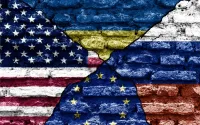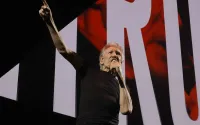15 June 2007Donald Macintyre
The Palestinian President Mahmoud Abbas dissolved the "national unity government" last night and sacked its Prime Minister Ismail Haniyeh after an especially savage day of internecine violence ended with Hamas in control of the Gaza Strip.
Mr Abbas's move, which Fatah hopes will underpin its dominance of the West Bank after the near-total defeat of its forces in Gaza, underlined the growing separation of the two Palestinian entities and prompted talk among some Israeli analysts of a "three state solution" involving Israel, Gaza and the West Bank.
Hamas Radio underlined Mr Abbas's lack of control over Gaza when it said the faction had taken control of his presidential compound, a symbolic last redoubt of Fatah power in Gaza.
Hamas's internal grip on Gaza was consolidated yesterday after it captured the headquarters of the Fatah-dominated Preventative Security force and two other security bases and took effective control in the southern border town of Rafah, in a bloody day of fighting which cost 32 Palestinian lives. Three bodies were found under the rubble of a Fatah-controlled security building in Rafah which had been overrun by Hamas.
In a decree announced by one of his senior aides, Tayeb Abdel Rahim, in Ramallah and swiftly dismissed by Hamas officials in Gaza Mr Abbas declared a formal state of emergency, said he was dissolving the woefully ineffective Fatah-Hamas coalition brokered by Saudi Arabia three months ago and promised to form a new government in its place.
But it had been the battle for the headquarters of Preventative Security in Gaza City which was the bloodiest as well as the most decisive in Hamas's relentless four-day campaign to take control of Gaza. This was not least, according to witnesses, because of a murderous aftermath in which several Fatah activists were dragged from the building and executed in the street.
Television pictures had earlier shown some of Hamas's Fatah captives being marched along the street with their hands in the air. The Hamas spokesman Sami Abu Zuhri denied reports of executions and insisted: "Whoever was killed was killed in clashes."
He added the Islamic group had been forced to wrest control from Fatah because its security services were corrupt and generated chaos. But a Fatah official said that Hamas shot dead seven of its fighters outside the building and a doctor at Shifa Hospital said that he had examined two bodies shot in the head at close range.
Neither the official nor the medic were prepared to give their names for fear of reprisals. A witness, Amjad, also declined to give his full name when he told the Associated Press from his home: "They are executing them one by one. They are carrying one of them on their shoulders, putting him on a sand dune, turning him around and shooting."
The headquarters has a symbolic importance for Hamas beyond its role as a key military bastion and the bloody assault on the compound appeared to be in part a settling of scores more than a decade old. It was Preventative Security that spearheaded Yasser Arafat's famous crackdown on his Hamas opponents in the mid-1990s. It was also in this building that the interrogations took place in which Hamas figures of the time like Mahmoud Zahar who until a few months ago was the Palestinian Foreign Minister are alleged to have been humiliated and tortured by the Fatah forces.
Some of the masked Hamas gunmen kissed the ground after the building was captured amid thankful cries of "Allah Akbar". Hamas TV said the Preventive Security building would be turned into an Islamic college and displayed a room packed with what the station said was wire-tapping equipment.
The attack came after five days of fighting which have cost 90 Palestinian lives and seen both sides carrying out other summary executions, throwing opponents from the upper floors of high-rise buildings, hijacking ambulances to use as military vehicles, and engaging in gunfire inside the precincts of hospitals.
The dire impact of the conflict on Gaza's 1.5 million inhabitants was underlined when the European Commission suspended aid projects because of the escalating violence.
Mr Haniyeh reaffirmed his belief in the national unity government in a television broadcast early today and insisted it would continue to the " best of its abilities". He appealed once again for the release of Alan Johnston, the kidnapped BBC journalist. And he went out of his way to dismiss the idea that a separate Palestinian state could be created in Gaza.
Fatah leaders who were blamed by Mr Haniyeh for undermining the national unity government came under criticism from local commanders for absenting themselves from the Strip during the fighting.
In the West Bank Fatah militants rounded up nearly 90 Hamas fighters in the first such effort to reassert its authority since the Arafat crackdown in 1996. Issam Abu Bakr, a Fatah leader in the West Bank city of Nablus, said: " There was a decision by the leaders of the security forces to go after Hamas and to arrest them, before they think of bringing the war here."
The near-rout of Fatah in Gaza is a signal setback to the US-led policy of trying to bolster Fatah forces with money, training and equipment, while continuing the total isolation of Hamas despite increasing signs of strain between the political and the military wings.
While the former appeared ready to try to make the national unity government work, the latter argued that it had failed to achieve a lifting of the international boycott.
Israeli officials were quoted as saying that Ehud Olmert would tell President George Bush that Gaza and the West Bank will now have to be treated differently, and that the military would need to enforce a " separation policy" between the two Palestinian entities.
In fact, even in relatively peaceful times, Gaza has been almost totally separated from the West Bank. The comprehensive agreement which Condoleezza Rice thought she had brokered in November 2005, and which included provisions for "safe passage" from Gaza to the West Bank, has not been implemented. Israel retains control of Gaza's crossings, territorial waters, and airspace.
Nevertheless the Israeli hints suggested the possibility of a "West Bank first" policy of trying to reach agreements with Mr Abbas which ignore Gaza.
In terms of progress to a long-term settlement there are paradoxes in this approach, because there is little to negotiate about over Gaza, which is bounded by pre-1967 borders and where there are no longer any settlements. Negotiations about Jerusalem and the borders between Israel and the West Bank are much more fraught.
The forces behind this eruption of violence
Who and what are Fatah and Hamas?
Fatah, formed in the 1950s by Yasser Arafat, started as an armed liberation movement trying to take control of the whole of historic Palestine. But after finally recognising Israel it took part in the Oslo accords in the early 1990s in the hope of a two-state solution in which Israel would give up the territory it seized in 1967 to make way for a Palestinian state on the pre-1967 borders.
Fatah ran the Palestinian Authority set up under Oslo and lost the PA elections partly because it was seen as inefficient and corrupt, and arguably, partly because it had failed to fulfil its ambition of a Palestinian state. Hamas, formed in 1987 was a Palestinian offshoot of the Muslim Brotherhood, committed then - and by its charter now - to establishing an Islamic state in the whole of historic Palestine.
It gained popularity both through its commitment to armed actions against Israel, from the mid-1990s, including suicide bombings against civilians, with the result that it was labelled a terrorist organisation by most of the Western world, and for its administration of a social welfare network.
It has resolutely refused to recognise Israel but its political spokesmen have spoken of a long-term truce in return for a Palestinian state on 1967 borders. Elected to a parliamentary - and therefore cabinet - majority in January 2006.
How come they are fighting now if they are supposed to be in government together?
The bitter rivalry between the two groups, partly compounded by the refusal of elements in Fatah to accept the results of the 2006 elections, had spilled into serious violence, resulting in some 160 deaths, at the turn of the year, an outbreak supposed to have been stopped by the Saudi-brokered Mecca deal which formed the new "national unity" coalition. But it was a shotgun wedding, based on the deep desire of the Palestinian population for security and the allocation of ministerial posts rather than a joint political programme. And second, it looks as though neither Mahmoud Abbas the (Fatah) President or Ismail Haniyeh the (Hamas) Prime Minister have been able to exercise full control of their forces.
How did the latest round of fighting start?
Almost impossible to identify a single moment though there were a number of incidents on 8 June, including the violent kidnappings of two Hamas figures by Fatah gunmen, a bodyguard to Mr Haniyeh and a doctor, who were respectively beaten and shot and wounded.
A Fatah activist was also shot dead by Hamas gunmen after they complained he had been among gunmen who attacked Hamas supporters outside a mosque. But these incidents were triggers rather than causes.
http://news.independent.co.uk/world/middle_east/article2659712.ece






